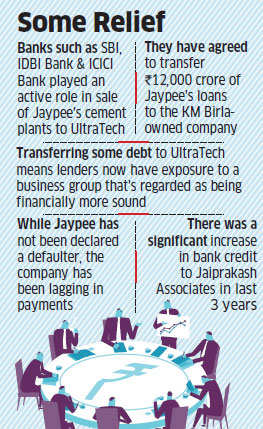Gross NPAs of PSBs rose to Rs 3.61 lakh cr while that of private lenders were at Rs 39,859 cr at the end of Dec'15
In order to effectively deal with Vijay Mallya type loan default cases, government Friday directed public sector banks to immediately invoke personal guarantees of promoter directors and recover loans from them in case the companies fail to repay.
Issuing the directive to heads of PSBs, the Finance Ministry regretted they seldom recover loan from guarantors in case of loan default by companies.
"It has been observed that there are a less number of cases where action has been taken for recovery against guarantors for attachment of assets owned by them and sell the same for recovery of defaulted loan," it said while issuing the directive in consultation with the RBI.
The ministry further told banks that "it would be prudent to take steps against guarantors immediately when no sign of revival is visible".
Asking banks to approach Debt Recovery Tribunal (DRT), it said action against guarantors should be taken under SARFAESI Act, Indian Contract Act and relevant legislations.
Exit of beleaguered industrialist Mallya to London early this month created huge uproar in Parliament as well as outside. Various companies associated with him owe over Rs 9,000 crore to different banks.
Mallya and his group firms are being probed by several agencies including Enforcement Directorate.
Gross NPAs of PSBs rose to Rs 3.61 lakh crore while that of private lenders were at Rs 39,859 crore at the end of December 2015.
Gross NPA ratio, as percentage of advances, rose to 7.30% while for private banks, it stood at 2.36% as of December-end.
In the event of default in repayments or loan by the borrower company, all directors are liable to repay the guaranteed loan with interest as the liability or the guarantor is co-extensive with the principal debtor (borrower).
"Action can be taken against the guarantor without suing the principal debtor for recovery and even if the decreed amount is covered by mortgage decree," the ministry said.
As per the law, if a guarantor has given any pledge of share held by him, the steps should be taken to sell the pledged share, under the Indian Contract Act.
The directive said that if the guarantor has not created any security Internet over his property but owns property and other assets, the banks should move DRT for their attachment and sale.
The banks, it said, should also keep a watch on periodical statement of book-debts and receivables submitted by the borrower and take steps for attachment and recovery of such book-debts under SARFAESI.
Issuing the directive to heads of PSBs, the Finance Ministry regretted they seldom recover loan from guarantors in case of loan default by companies.
"It has been observed that there are a less number of cases where action has been taken for recovery against guarantors for attachment of assets owned by them and sell the same for recovery of defaulted loan," it said while issuing the directive in consultation with the RBI.
The ministry further told banks that "it would be prudent to take steps against guarantors immediately when no sign of revival is visible".
Asking banks to approach Debt Recovery Tribunal (DRT), it said action against guarantors should be taken under SARFAESI Act, Indian Contract Act and relevant legislations.
Exit of beleaguered industrialist Mallya to London early this month created huge uproar in Parliament as well as outside. Various companies associated with him owe over Rs 9,000 crore to different banks.
Mallya and his group firms are being probed by several agencies including Enforcement Directorate.
Gross NPAs of PSBs rose to Rs 3.61 lakh crore while that of private lenders were at Rs 39,859 crore at the end of December 2015.
Gross NPA ratio, as percentage of advances, rose to 7.30% while for private banks, it stood at 2.36% as of December-end.
In the event of default in repayments or loan by the borrower company, all directors are liable to repay the guaranteed loan with interest as the liability or the guarantor is co-extensive with the principal debtor (borrower).
"Action can be taken against the guarantor without suing the principal debtor for recovery and even if the decreed amount is covered by mortgage decree," the ministry said.
As per the law, if a guarantor has given any pledge of share held by him, the steps should be taken to sell the pledged share, under the Indian Contract Act.
The directive said that if the guarantor has not created any security Internet over his property but owns property and other assets, the banks should move DRT for their attachment and sale.
The banks, it said, should also keep a watch on periodical statement of book-debts and receivables submitted by the borrower and take steps for attachment and recovery of such book-debts under SARFAESI.











